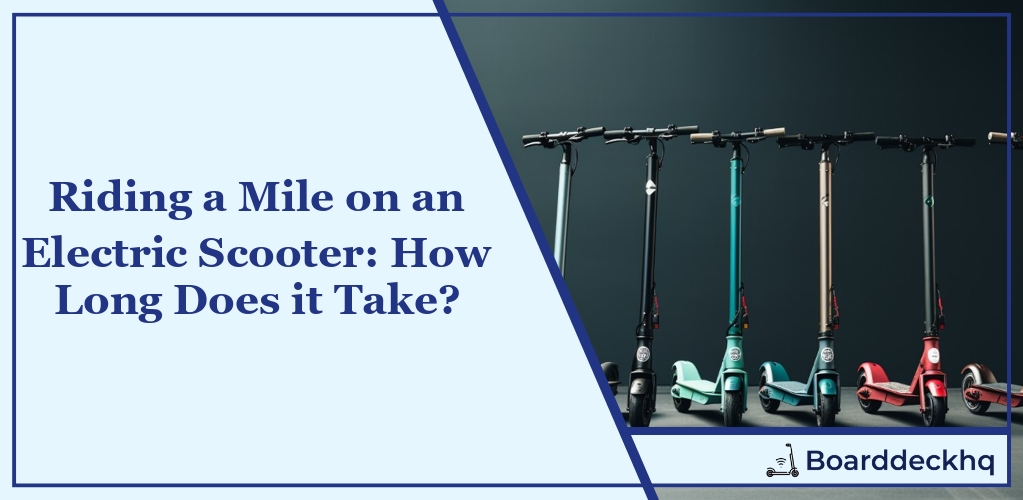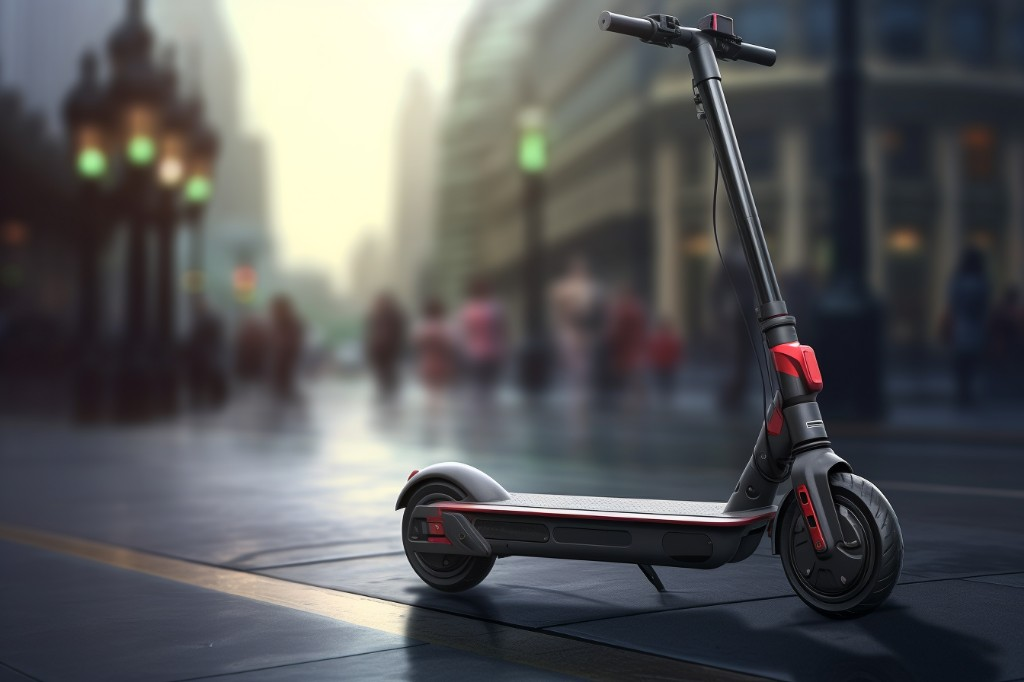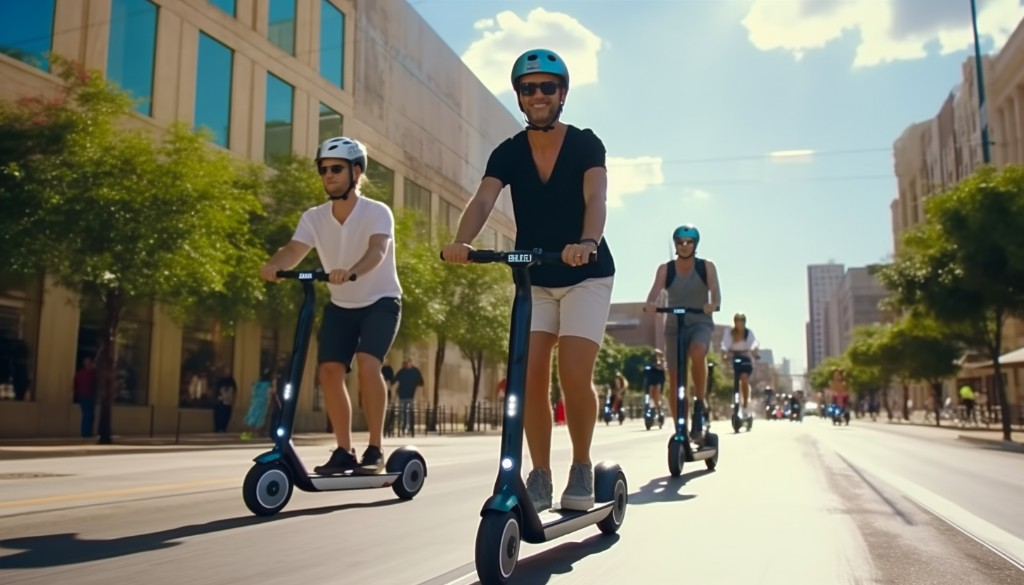Have you ever gazed at an electric scooter and found yourself wondering just how long it would take to cover a mile on one of those sleek machines? It’s a seemingly simple question, but the answer is a surprising journey into the world of variables, rider influence, battery life, and external factors. Now imagine the freedom and exhilaration as you zip along while the world whizzes by. It’s not just about the destination; it’s about the thrill of the ride.
What we’ll cover
- Unraveling Variables Impacting Scooter Speed
- The Rider’s Influence: Weight and Style
- Scooter Battery Life and Its Range
- Navigating Through Traffic and Terrain
- Tips for an Optimized Scooter Ride
Now, let’s kick-start this journey, and unravel the mystery behind clocking that mile on an electric scooter!
Understanding the Variables: Factors That Influence Electric Scooter Speed
To answer the question of how long it takes to electric scooter a mile, we must first delve into the factors that influence an electric scooter’s speed. It’s akin to baking a cake. You need to know the ingredients and how they interact to produce a delicious result. In this case, the ‘cake’ is the speed of your e-scooter and the ‘ingredients’ are the variables that affect it.
One primary factor is the electric scooter model itself. Just like how cars vary in speed and performance, electric scooters are no different. Each model has a specific maximum speed, determined by the manufacturer based on its design and engine capacity. Some high-performance models can reach a top speed of 20 mph, while others may max out at 15 mph.

Furthermore, e-scooters are often equipped with speed settings, allowing you to select different modes based on your comfort level and requirements. So, the top speed of your electric scooter can travel might not necessarily be the speed you’re riding at, especially if you’re a beginner or prefer a more leisurely ride.
The Role of the Rider: Weight and Riding Style
Your weight and how you ride the electric scooter play crucial roles in determining how long it will take you to ride an e-scooter a mile.
Rider weight can significantly impact the electric scooter’s performance. Most electric scooters have a maximum weight limit, often around 220 lbs. If your weight exceeds this limit, your e-scooter might struggle to reach its top speed. Conversely, if you’re significantly lighter than the weight limit, your e-scooter might zip along faster than expected.
Your riding style also affects your scooter’s speed. If you’re an aggressive rider, frequently accelerating and decelerating, your scooter’s battery will drain faster, and your average speed might be lower. On the other hand, if you maintain a consistent speed, you can cover a mile more quickly and efficiently.
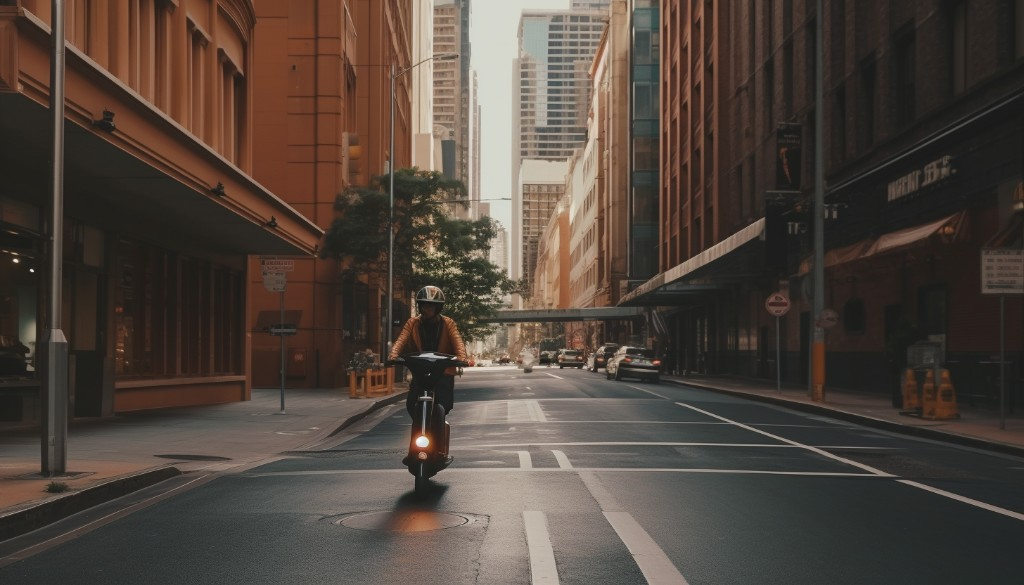
Electric Scooter Battery Life and Range
Just like how a car relies on fuel, an e-scooter’s ‘juice’ is its battery life. The range of your electric scooter is another significant factor that can influence how long it takes to cover a mile.
On a full charge, some electric scooters can travel up to 15-20 miles, while others might only manage 8-10 miles. The battery life and range are like the endurance of a long-distance runner. It determines how far you can go before you need to recharge or ‘rest’.
The capacity of the electric scooter battery also affects its performance. As the battery drains, the scooter’s speed can decrease. So, even if you start at a high speed, your pace might slow down as you near the end of your mile-long journey if your battery is running low.
Similarly, the frequency of stops and starts during your ride can drain your battery faster. Each acceleration consumes more power than maintaining a steady speed, so frequent stops can shorten your battery life and extend the time it takes to ride a single charge.
Given these factors, it becomes clear that the duration of a mile-long ride on an e-scooter is influenced by a combination of the scooter’s specifications, the rider’s weight and style, and the battery’s condition and range. By understanding these elements, you can better estimate how long it will take to e-scooter a mile under different conditions.
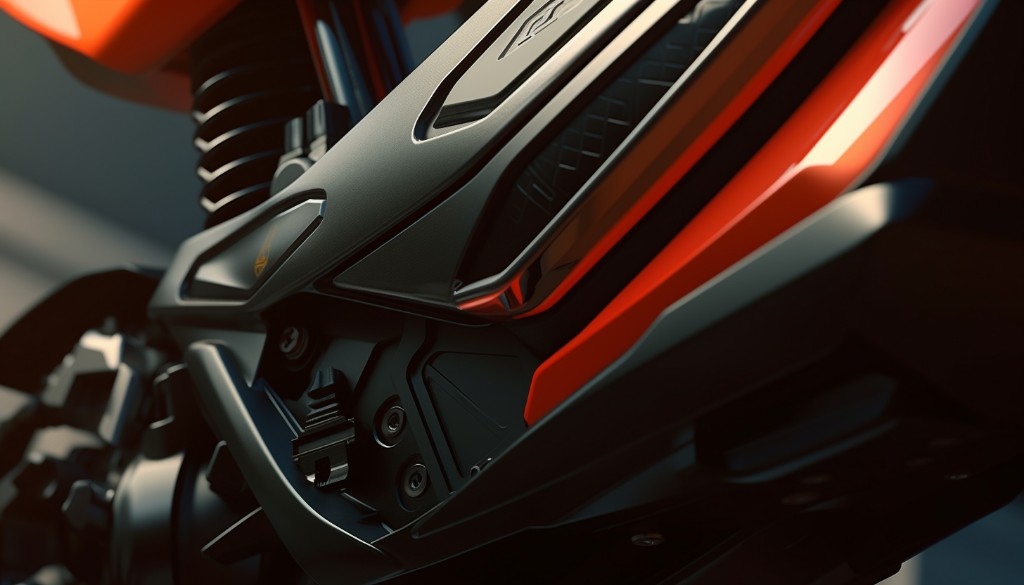
In addition to these factors, external conditions such as traffic and terrain can also play a significant role in determining how long it takes to cover a mile on an e-scooter. Let’s explore those aspects next.
Traffic, Terrain, and Other External Factors
Riding an electric scooter a mile is a journey that can be swayed by a host of external elements. One such factor is traffic conditions. Imagine this: you’re zipping through the city streets on your trusty e-scooter, the wind in your hair and a smile on your face. But suddenly, you hit a wall of traffic. You’re stuck behind a long line of cars, inching forward at a snail’s pace. In these situations, the time it takes to ride an electric scooter a mile can drastically increase.
Traffic Conditions and Your Scooter Ride
In contrast to the open roads, congested city streets can slow down your e-scooter ride significantly. This isn’t just about the number of cars on the road; stoplights and pedestrian crossings also come into play. Each red light or pedestrian crossing adds precious seconds, if not minutes, to your journey. Therefore, when calculating how long it will take you to cover a mile on your electric scooter, it’s crucial to take into account the traffic conditions you’ll be facing.
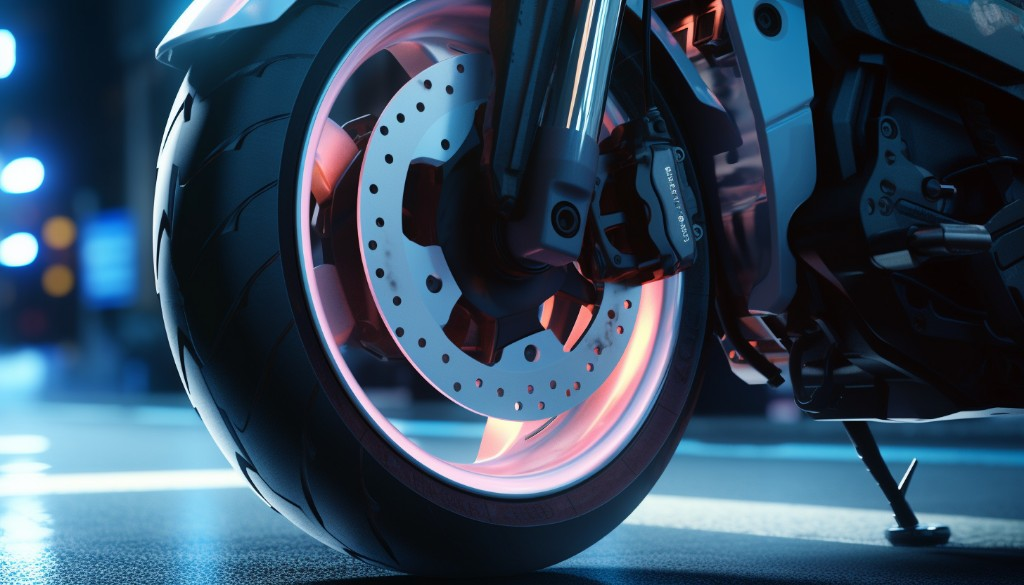
Terrain and Road Type: The Silent Speed Busters
Let’s talk about terrain. Imagine the road you’re riding on suddenly transforming into a steep uphill climb. Your electric scooter’s motor whirs and strains as it battles against gravity. It’s obvious that the time to scooter a mile has just increased.
The type of road you’re riding on can also have an impact. A smooth, paved road provides less resistance than a gravel or dirt path, allowing your e-scooter to maintain its top speed more easily. On the other hand, rough or uneven surfaces can slow you down and potentially damage your scooter.
Weather Conditions: The Unpredictable Variable
Last but not least, weather conditions can play a role in how long it takes to ride an electric scooter a mile. On a clear, sunny day, your scooter can easily maintain its top speed. But throw in some rain, snow, or strong winds, and suddenly your ride becomes more challenging. Wet or icy surfaces can reduce traction, making it harder for your e-scooter to maintain its speed. Strong winds, particularly headwinds, can also slow you down.
Enhancing Your Ride: Tips for Optimizing Scooter Speed
Even though these external factors can affect your ride, there are ways to optimize your electric scooter’s speed and reduce the time taken to travel a mile. Remember, electric scooters are designed as a convenient mode of transportation – and with a few simple strategies, you can ensure they live up to that promise.
Know Your Scooter’s Capabilities
First and foremost, understanding how fast your e-scooter can travel under ideal conditions is crucial. This knowledge can help you gauge how long it will take you to cover a mile and plan your journey accordingly.
Maintain Your Scooter
Regular maintenance is key to keeping your electric scooter in top shape. This includes checking the tire pressure, cleaning the scooter regularly, and ensuring the battery is fully charged before each ride. These steps can help your e-scooter maintain its optimal speed.
Optimize Your Riding Technique
Believe it or not, how you ride an electric scooter can also affect its speed. Try to maintain a steady pace instead of constantly speeding up and slowing down. Not only will this improve battery life, but it will also help you cover distance more quickly.
Choose Your Route Wisely
Finally, choosing the right route can make a significant difference in how long it takes to ride an electric scooter a mile. Whenever possible, opt for routes with less traffic, fewer stoplights, and smoother terrain. Not only will this make your ride faster, but it will also make it more enjoyable.
By considering these factors and tips, you can better understand and control how long it takes to electric scooter a mile. Just remember, while speed is important, safety should always be your top priority.
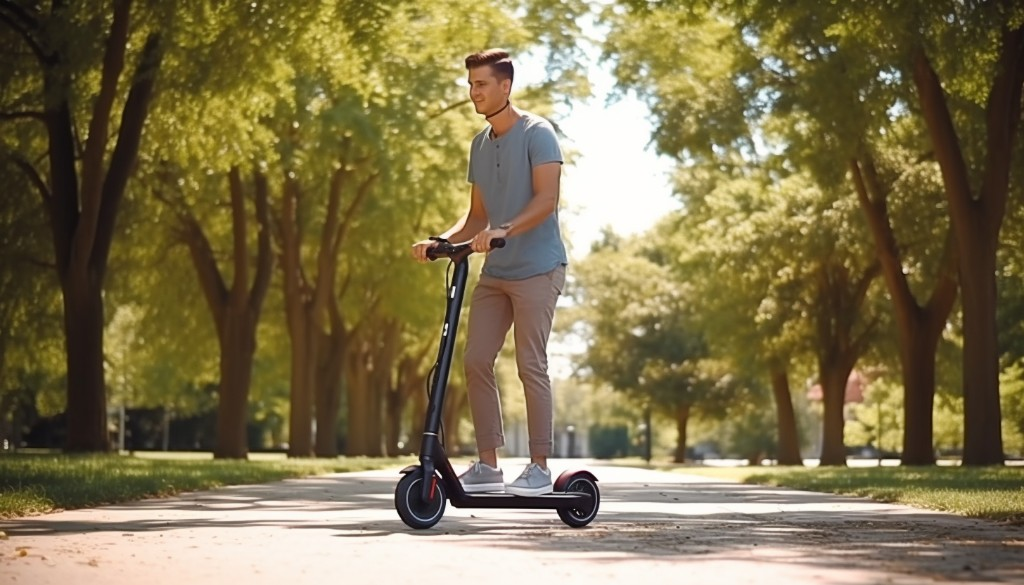
Understanding the Duration: The Mile on an Electric Scooter
Having dived into the factors that influence how long it takes to e-scooter a mile, we’ve seen that it’s not as simple as glancing at a stopwatch. Various elements come into play, ranging from the scooter’s speed and battery life to the terrain and traffic conditions.
The Scooter’s Speed and Battery Life
The most immediate factors determining how long does it take to electric scooter a mile are the speed of your scooter and the longevity of its battery. These two are intrinsically linked – higher speeds often mean shorter battery life, and slower speeds can extend the range of your ride. A balance between speed and battery conservation is crucial for an efficient and long range ride.
The Terrain and Traffic Conditions
Let’s not forget about the terrain and traffic conditions. Even if you have the fastest electric scooter with a long-lasting battery, rough terrains or heavy traffic can slow you down, extending the time it takes to cover a mile on an e-scooter.
Other External Factors
Even factors like your weight and the weather can play a role in how quickly you can cover a mile on an electric scooter. For instance, heavier riders may find that their scooters’ batteries deplete quicker, thereby affecting the range ability.
To put it into perspective, imagine carrying a heavy backpack while trying to run a mile. You’d probably find yourself getting tired faster and taking longer to finish the mile, compared to if you were running without the extra weight. This is comparable to the strain an additional load puts on your e-scooter’s battery.
A Snapshot of the Journey
With all these factors in mind, we can start to see how the question, “How long does it take to electric scooter a mile?” doesn’t have a one-size-fits-all answer. It’s not just about speed or distance – it’s about how these factors interact and affect each other.
So, as we scoot off into the sunset, it’s important to remember that our journey is shaped by a multitude of factors, each with its unique influence on our mile-long adventure.
Armed with this knowledge, you’re now better equipped to understand your electric scooter’s capabilities and limitations. This can help you plan your trips more effectively, ensuring you make the most of your e-scooter’s range. Now, let’s address some frequently asked questions that often come up in relation to electric scooters.
Closing Thoughts
In the journey of understanding the time it takes to electric scooter a mile, we’ve explored numerous variables. The e-scooter’s speed is influenced by a myriad of factors such as the rider’s weight, riding style, battery life, and even the nature of the terrain and traffic. It’s clear that a ride on an electric scooter isn’t merely a linear equation of distance and speed, but a complex interplay of many variables.
A rider’s weight can significantly impact the electric scooter’s performance, and different riding styles can yield different results. The battery life plays a crucial role as well, dictating how far and how fast you can go. External factors such as traffic and terrain also add their own twists to the equation.
And yet, despite these complexities, there are ways to enhance your ride and optimize your scooter’s speed. In essence, the question of , “How long does it take to electric scooter a mile?” is as layered and nuanced as the ride itself.
Frequently Asked Questions
How long does it typically take to ride a mile on an electric scooter?
The time it takes to ride a mile on an electric scooter can vary based on several factors such as the scooter’s speed, the rider’s weight, and riding style. However, on average, it can take around 5 to 10 minutes to cover a mile.
How does rider weight affect an electric scooter’s speed?
Rider weight can significantly affect an electric scooter’s speed. A heavier rider may cause the scooter to move slower compared to a lighter one. This is because the motor has to work harder to propel the extra weight.
What impact does battery life have on how far an electric scooter can travel?
Battery life plays a crucial role in determining how far an electric scooter can travel. A fully charged battery will allow for longer rides at optimal speed. As the battery drains, the scooter’s speed may decrease, thus affecting the travel distance.
How do road and traffic conditions influence the time taken to ride a mile on an electric scooter?
Road and traffic conditions can greatly influence the time taken to ride a mile on an electric scooter. A smooth, flat surface with little to no traffic allows for faster rides, while rough terrain or heavy traffic can slow down the scooter, increasing the time to cover a mile.
What can I do to increase my electric scooter’s speed and reduce travel time?
There are several ways to optimize your electric scooter’s speed. Maintaining a good battery life, reducing the weight carried on the scooter, adopting an efficient riding style, and choosing routes with smooth surfaces and less traffic can all contribute to increased speed and reduced travel time.
